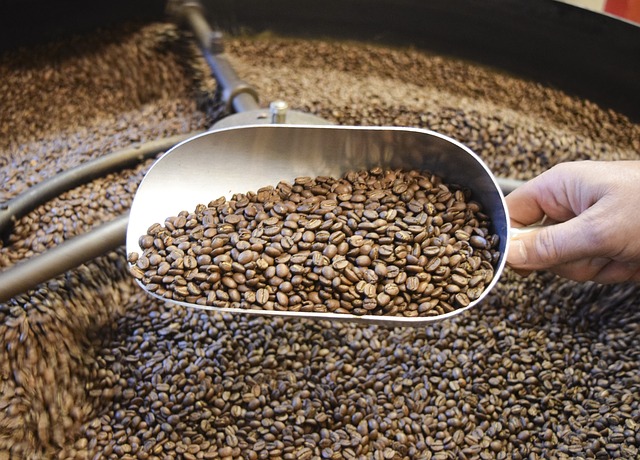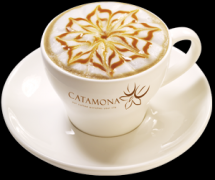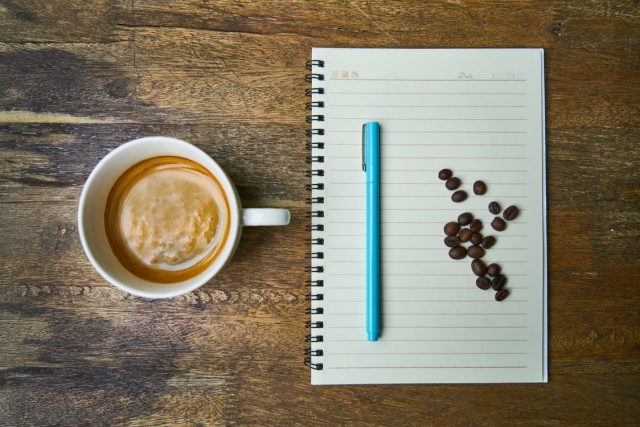Barista must read: the effect of roasting on coffee flavor

For professional baristas, please follow the coffee workshop (Wechat official account cafe_style)
Bake out a rich and charming aroma ~
The 700 or 800 aroma ingredients contained in raw coffee beans must be awakened by professional roasting. Without this baking procedure, coffee is just some uncomfortable taste of the sun or water, let alone as a drink. After five to seven minutes of strong heating, raw beans cause drastic chemical changes, which in turn give off a special strong fragrance, a complex chemical reaction that even the most sophisticated laboratory cannot simulate, but it can probably be summarized into a few key items.
First of all, after baking raw beans at more than 200 degrees Celsius, the moisture begins to evaporate, the volume expands by 60%, and the weight is reduced by about 20%. Depending on the degree of baking, the deeper the baking, the more weight loss. Another important phenomenon is exhaust. Raw beans release carbon dioxide coffeebyroast during roasting, and coffee beans continue to exhaust after roasting. Carbon dioxide emissions contribute to the preservation of coffee beans, because in the exhaust process, oxygen molecules are not easy to invade, that is, the oxidation that affects the freshness of coffee cannot be carried out, but the exhaust phenomenon slows down gradually after baking. Oxygen molecules are easily attached to the surface of coffee beans, and coffee will soon lose its flavor, which is an important reason why it is best to drink as much as possible after opening the seal.
The secret of coffee roasting
The chemical reaction of coffee beans can be judged by sound, color and taste when roasting. As the color of coffee beans continues to heat up, the color of coffee beans will change from grayish green to golden brown and then light brown to light brown, followed by a large amount of oil showing a dark brown of oil. if you continue to bake, the oil on the surface of the coffee beans will dry and appear black. and emit a lot of smoke, mixed with scorching smell, this is a warning close to the ignition point, coffee beans from light to dark, due to changes in caramelization and acidic substances.
Listening to sound is also the basis for judging the degree of baking. If the temperature of the roaster is hot enough, the coffee beans will burst twice during the baking process. For example, the heat-resistant raw beans such as Mantenin and Antigua will give off the first explosion in about seven minutes, and the sound will be low and sparse. This means that the pyrolysis has been started, that is, the starch begins to be converted into caramel, and the water also spurts out of the bean table with carbon dioxide, emitting a low burst sound, and two minutes return to calm. The second explosion was sent out at about 12 minutes, which means that the coffee beans have almost been roasted, and then the coffee beans are removed from the roaster to the cooling plate, and the aroma is immediately filled with aroma!
In addition, Brazil and Java and other less heat-resistant beans, the first explosion and the second explosion came earlier, the heat control should pay special attention.
Data transformation
After understanding the characteristics of coffee beans during roasting, let's talk about the definition of various baking degrees and tastes. The baking degree has long been defined by Cinnamon (shallow roasting), City (shallow roasting), Fully City (deep roasting) and Dark roast (heavy deep roasting, including semantic and French). In recent years, the American Fine Coffee Association has strongly advocated the caramelization value (Agtron number) to determine the baking degree of coffee beans, that is, the red inner line to determine the caramelization degree of coffee beans. The higher the value, the lower the caramelization, that is, the shallower the baking degree, and the lower the value, the deeper the caramelization, that is, the deeper the baking degree, the more accurate the baking degree of coffee beans with the data, so that there will not be different baking standards in different regions.
The flavor of coffee will also change with the degree of roasting. Generally speaking, the sour taste is inversely proportional to the degree of roasting. If you prefer sour taste, you might as well buy coffee with a light roasting degree. If you like a rich taste with a little sweetness, you can choose to re-roast beans. In addition, the caffeine content is inversely proportional to the baking degree, that is to say, the caffeine content of shallow roasted coffee will be higher. Because caffeine can be destroyed during baking. The fruity aroma will also decrease with the deepening of roasting degree, but light roasted coffee is less likely to show the fermented flavor, irritating taste and sweet taste of mellow wine. However, if the heavy roasting technology is not good, it is likely to bake charred and bitter coffee.
Other factors affecting coffee roasting
The hardness, water content and year of raw coffee beans all affect roasting, so roasters will adjust the roasting treatment of coffee because of this influence factor. Generally speaking, the newer the beans, the higher the water content, and the dehydration time should be increased during baking. On the other hand, the raw beans with more years have lower moisture and acidity, the time of dehydration should be shorter, and under the same baking conditions, the acidity of raw beans will be weaker and softer than that of new beans.
Important Notice :
前街咖啡 FrontStreet Coffee has moved to new addredd:
FrontStreet Coffee Address: 315,Donghua East Road,GuangZhou
Tel:020 38364473
- Prev

Coffee shop winter coffee drink production recipe operation tutorial
Professional barista communication, please pay attention to coffee workshop (Weixin Official Accounts cafe_style) loyal to the original flavor suggestion cup: 200c.c. magnetic cup method: 1. Prepare a small slice of lemon and a plate of white caster sugar 2. Put lemon on the mouth of the magnetic cup, turn the magnetic cup upside down on white granulated sugar, and distribute it evenly on the mouth of the cup to make a sugar cup for later use. 3. Prepare another coffee.
- Next

Boutique Coffee & introduction to Coffee roasting: what on earth is "boutique coffee"?
Professional baristas Please follow the Coffee Workshop (Wechat official account cafe_style) many people have heard of boutique coffee and think they are drinking boutique coffee, so what is boutique coffee on earth? Is it true that as long as you have drunk mermaid coffee (the largest coffee chain in the world) and 24-hour open coffee, you have drunk fine coffee? In fact, big
Related
- Beginners will see the "Coffee pull flower" guide!
- What is the difference between ice blog purified milk and ordinary milk coffee?
- Why is the Philippines the largest producer of crops in Liberia?
- For coffee extraction, should the fine powder be retained?
- How does extracted espresso fill pressed powder? How much strength does it take to press the powder?
- How to make jasmine cold extract coffee? Is the jasmine + latte good?
- Will this little toy really make the coffee taste better? How does Lily Drip affect coffee extraction?
- Will the action of slapping the filter cup also affect coffee extraction?
- What's the difference between powder-to-water ratio and powder-to-liquid ratio?
- What is the Ethiopian local species? What does it have to do with Heirloom native species?

